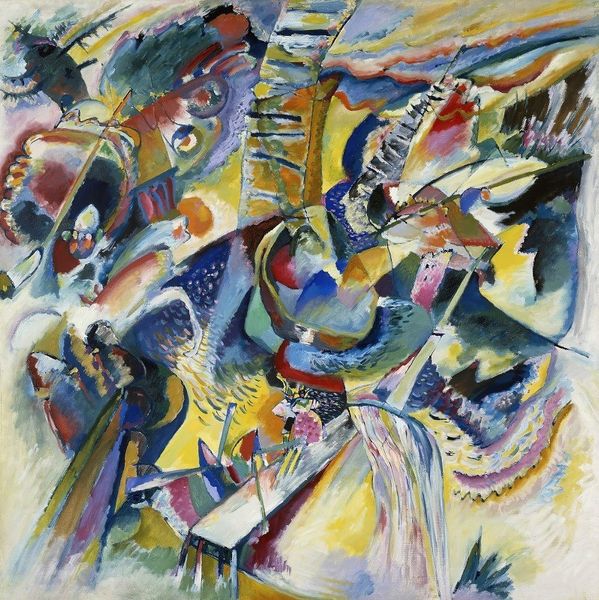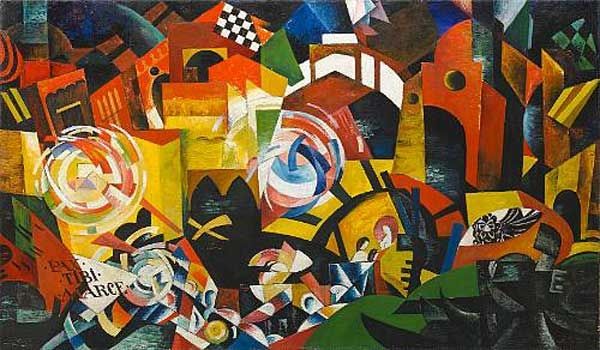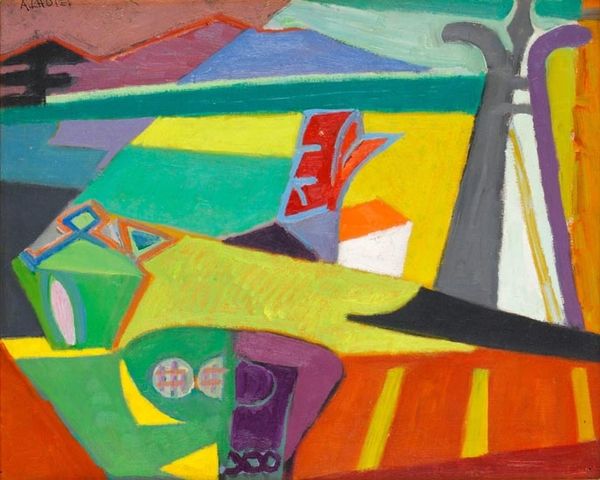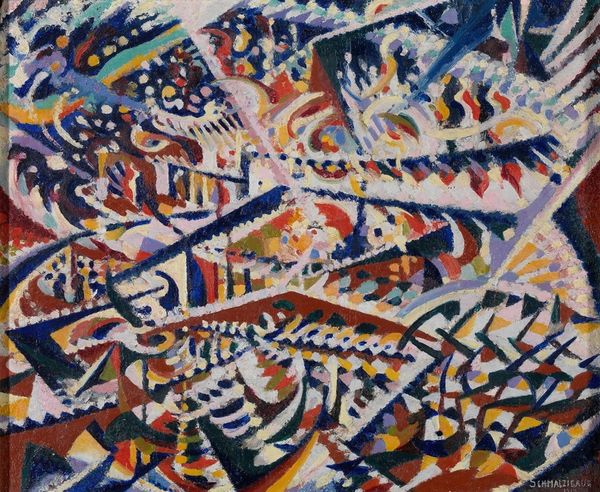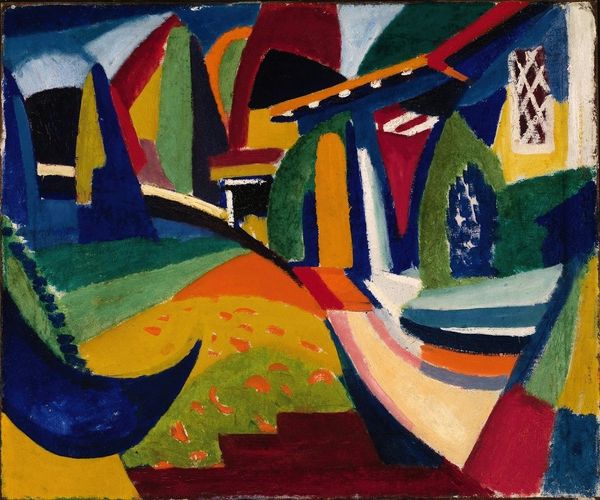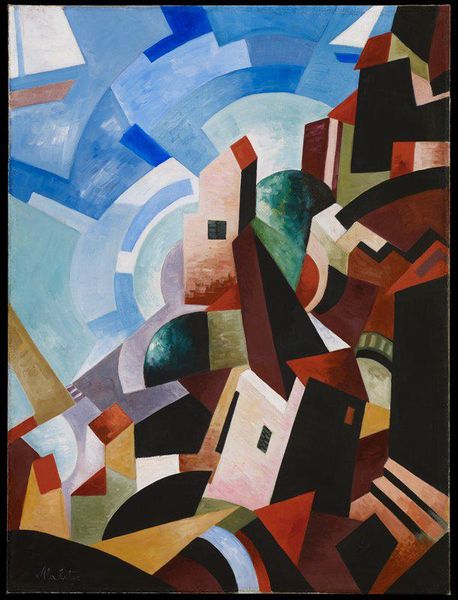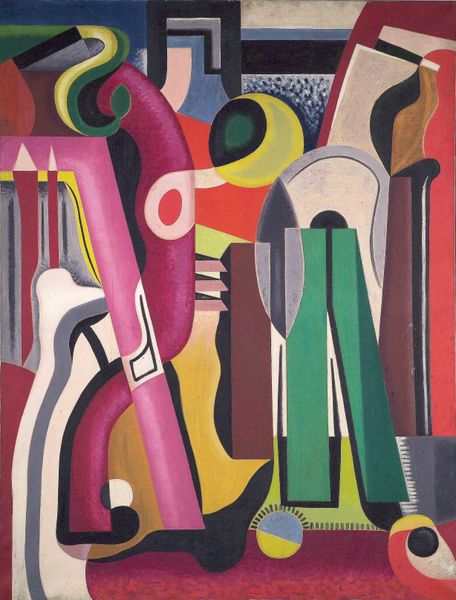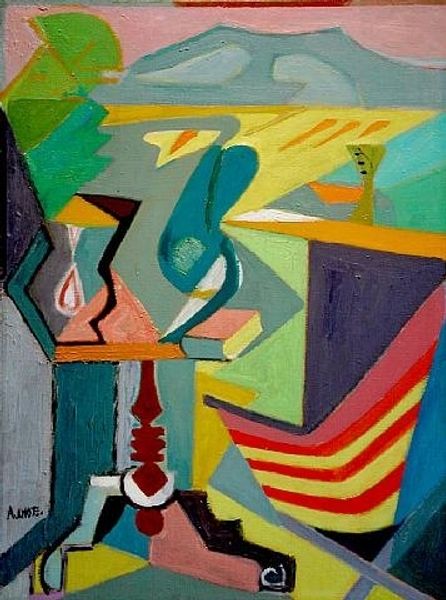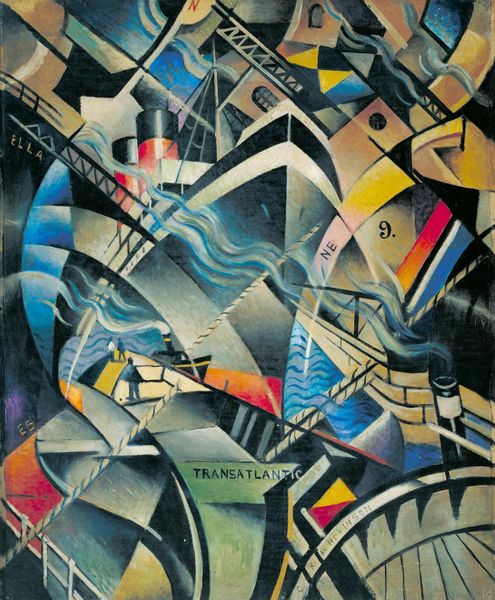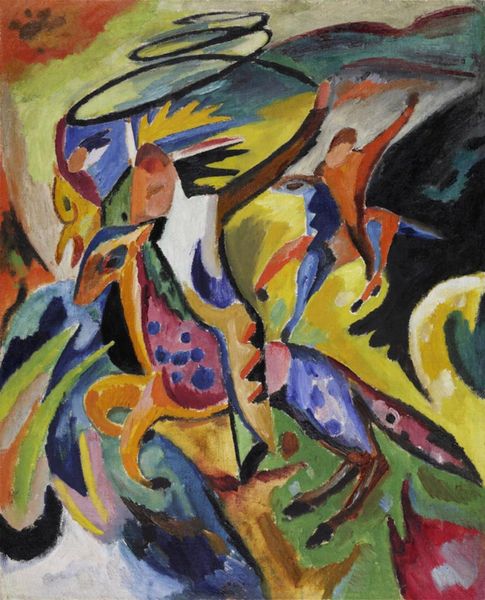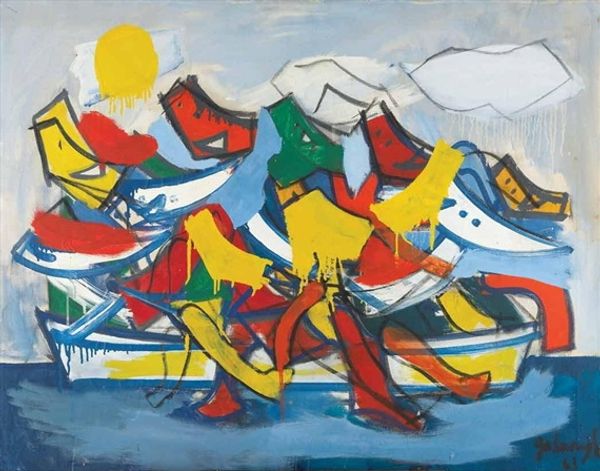
#
abstract expressionism
#
abstract painting
#
graffiti art
#
pop art
#
tile art
#
acrylic on canvas
#
street graffiti
#
spray can art
#
paint stroke
#
chaotic composition
Copyright: Public domain US
Curator: What an explosion of forms and colors. I must say I’m immediately struck by the… organized chaos. Editor: Organized is generous, isn't it? The surface looks rather overworked, too. Do you know anything about its creation? Curator: I do. This untitled piece, crafted by Julius Evola in 1919, gives us insight into an artist deeply engaged with the currents of his time. A period when old certainties crumbled in the wake of war and new artistic languages began to emerge. Editor: And by new languages, you mean abstraction… this is not exactly the traditional, representational painting. Tell me more about the materials; looks like canvas and acrylic. Curator: Indeed. The artist chose acrylic on canvas as his medium here, which lends a certain boldness to the execution. Acrylic was quickly adopted because it was cheaper and easier to transport for an up-and-coming artist during this period. Now think about that intense red... Editor: Yes, those intense reds, competing with what seem to be starbursts, maybe reflections of shattering glass, or light—a chaotic perspective altogether, fighting for space. There is tension evident in how thick the paint sits on the surface. Curator: Tension reflecting the period. Evola embraced abstraction at a pivotal moment, participating in a European-wide move away from mimetic representation after the war. Editor: Was he trying to move away from the expectations, maybe even the limitations, associated with "high art"? His approach and choice of materials is pushing a conversation of what we value. Curator: Precisely. By diving into abstraction, Evola challenged viewers, asking them to look beyond the surface, engaging instead with the emotions and the essence of lived experience within socio-political transformations. It's clear that artists during this period had new publics to serve. Editor: It's an intriguing combination, how materiality intersects with the socio-political here; something quite raw, immediate, challenging us to rethink boundaries. Curator: I agree completely. Studying this painting through the lens of history provides insight into the dynamism of early 20th century artistic circles. Editor: And viewing it from the material production gives a look at class and labour during this period of great turmoil and change. Thanks for joining me! Curator: A pleasure as always!
Comments
No comments
Be the first to comment and join the conversation on the ultimate creative platform.
